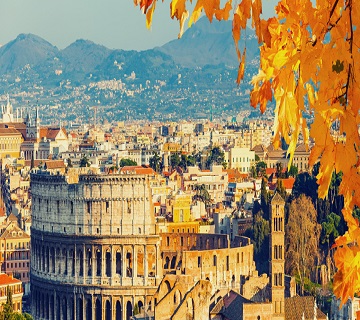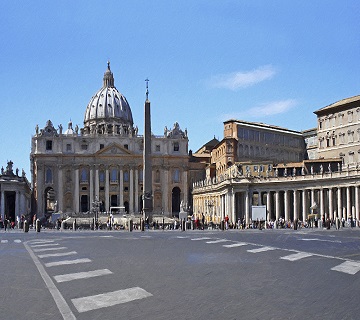Venue & Hospitality
City Highlights
About City
Education System:
Rome is a nationwide and major international center for higher education, containing numerous academies, colleges and universities. Rome is considered the world’s second most historically, educationally and culturally interesting and beautiful city. Rome’s major libraries include: the Biblioteca Vallicelliana, Biblioteca Casanatense & National Central Library. Libraries specialize in diplomacy, foreign affairs and modern history. There are also a large number of specialist libraries attached to various foreign cultural institutes in Rome, among them that of the American Academy, the French Academy and the Bibliotheca Hertziana-Max Planck Institute of Art History, a German library, often noted for excellence in the arts and sciences.
Transport:
Rome has an urban transport network which consists of buses, trams, rapid transit lines, light rail lines and suburban railways. Roma TPL is a private company which operates a minority of bus lines. Rome Metro is the rapid transit system serving the city with three underground lines. Rome’s over ground rail transport comprises the tramway network, suburban and urban lines in and around the city of Rome, plus an “Express Line” to Fiumicino Airport. Rome has comprehensive bus network, including trolleybus routes. The met rebus integrated fare system allows holders of tickets and integrated passes to travel on all companies’ vehicles within the validity time of the ticket purchased. Rome is one of the major hubs f Italian Railway network along with Milan and Bologna. The main railway station serving the city, Roma Termini, is the busiest station in Italy and one of the largest in Europe. Rome is served by three civil airports. The intercontinental Leonardo Da Vinvi Airport is Italy’s largest airport both for national and international traffic and one of the busiest in Europe.
Tourist Attraction:
Rome today is one of the most important tourist destinations of the world due to the incalculable immensity of its archaeological and artistic treasures as well as for the charm of its unique treasures, the beauty of its panoramic views and the majesty of its magnificent parks. Among the most significant resources are the many museums.. Rome is the third most visited city in the EU, after London and Paris and receives an average of 7-10 million tourists a year. Rome is a major archaeological hub and one of the world’s main centers of archaeological research. Rome contains a vast and impressive collection of art, sculpture, fountains, mosaics, frescos and paintings from all different periods.
Business Value:
As the capital of Italy, Rome hosts all the principal institutions of the nation, including the presidency of the Republic, the government, the parliament, the main judicial courts and diplomatic representative. Rome hosts major international and worldwide political and cultural organizations such as the IFAD, WFP, NATO Defense College and ICCROM. The economy of Rome is largely dominated by services, high-technology companies (IT, aerospace, defense, telecommunications), research, construction and commercial activities. Moreover, the huge development of tourism is very dynamic and extremely important to its economy. Universities, national radio and television and the movie industry in Rome are also important parts of economy.
Climate
Rome has a Mediterranean climate with cool, humid winters and warm, dry summers The average relative humidity is 75% varying from 72% in July to 77 % in November.
Venue
Rome, Italy





